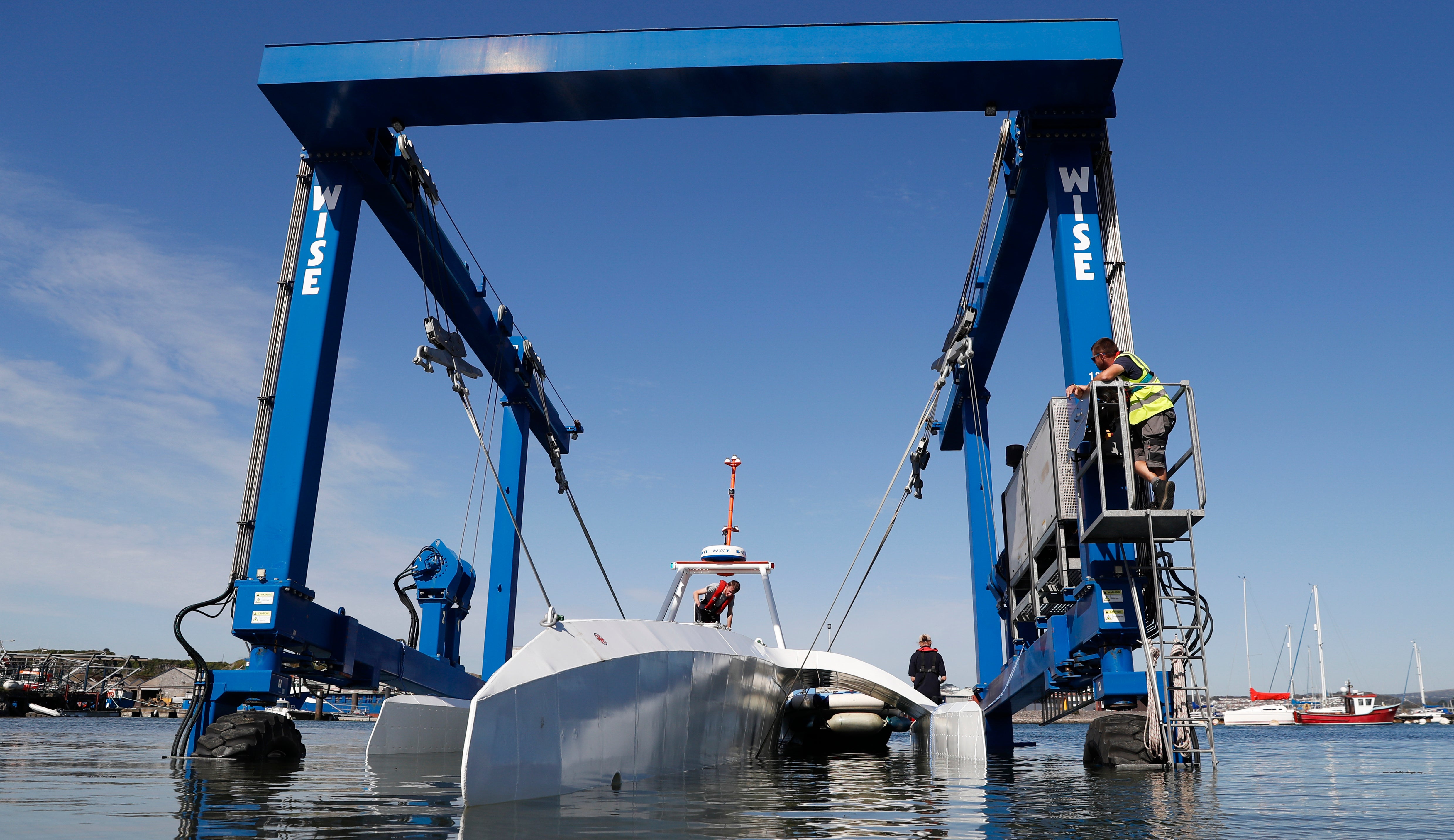Autonomous Mayflower reaches American shores -- in Canada
A crewless robotic boat that had tried to retrace the 1620 sea voyage of the Mayflower has finally reached the shores of North America — this time in Canada instead of the Massachusetts coast where its namesake landed more than 400 years ago

Your support helps us to tell the story
From reproductive rights to climate change to Big Tech, The Independent is on the ground when the story is developing. Whether it's investigating the financials of Elon Musk's pro-Trump PAC or producing our latest documentary, 'The A Word', which shines a light on the American women fighting for reproductive rights, we know how important it is to parse out the facts from the messaging.
At such a critical moment in US history, we need reporters on the ground. Your donation allows us to keep sending journalists to speak to both sides of the story.
The Independent is trusted by Americans across the entire political spectrum. And unlike many other quality news outlets, we choose not to lock Americans out of our reporting and analysis with paywalls. We believe quality journalism should be available to everyone, paid for by those who can afford it.
Your support makes all the difference.A crewless robotic boat that had tried to retrace the 1620 sea voyage of the Mayflower has finally reached the shores of North America — this time in Canada instead of the Massachusetts coast where its namesake landed more than 400 years ago.
The sleek autonomous trimaran docked in Halifax, Nova Scotia, on Sunday, after more than five weeks crossing the Atlantic Ocean from England, according to tech company IBM, which helped build it.
Piloted by artificial intelligence technology, the 50-foot (15-meter) Mayflower Autonomous Ship didn't have a captain, navigator or any humans on board — though it might have helped to have a mechanic.
“The technology that makes up the autonomous system worked perfectly, flawlessly,” said Rob High, an IBM computing executive involved in the project. “Mechanically, we did run into problems.”
Its first attempt at the trans-Atlantic crossing to Plymouth, Massachusetts, in June 2021 was beset by technical glitches, forcing the boat to return to its home port of Plymouth, England.
It set off again from England nearly a year later on April 27, bound for Virginia — but a generator problem diverted it to Portugal's Azores islands, where a team member flew in to perform emergency repairs. More troubles on the open sea came in late May when the U.S.-bound boat developed a problem with the charging circuit for the generator's starter batteries.
AI software is getting better at helping self-driving machines understand their surroundings and pilot themselves, but most robots can't heal themselves when the hardware goes awry.
Nonprofit marine research organization ProMare, which worked with IBM to build the ship, switched to a back-up navigation computer on May 30 and charted a course to Halifax — which was closer than any U.S. destination. The boat's webcam on Sunday morning showed it being towed by a larger boat as the Halifax skyline neared — a safety requirement under international maritime rules, IBM said.